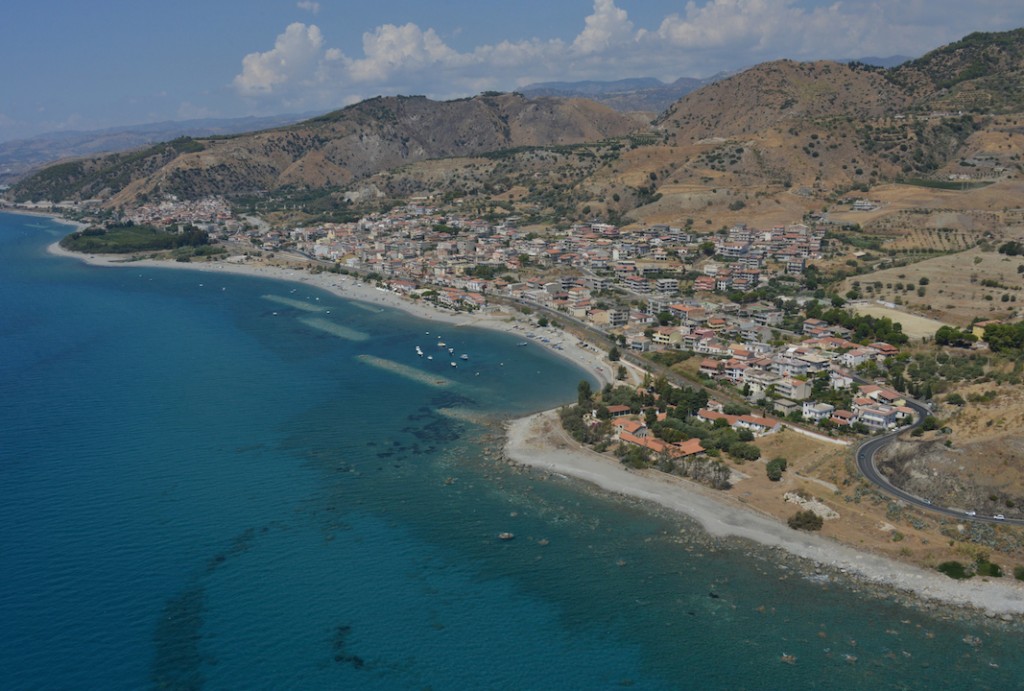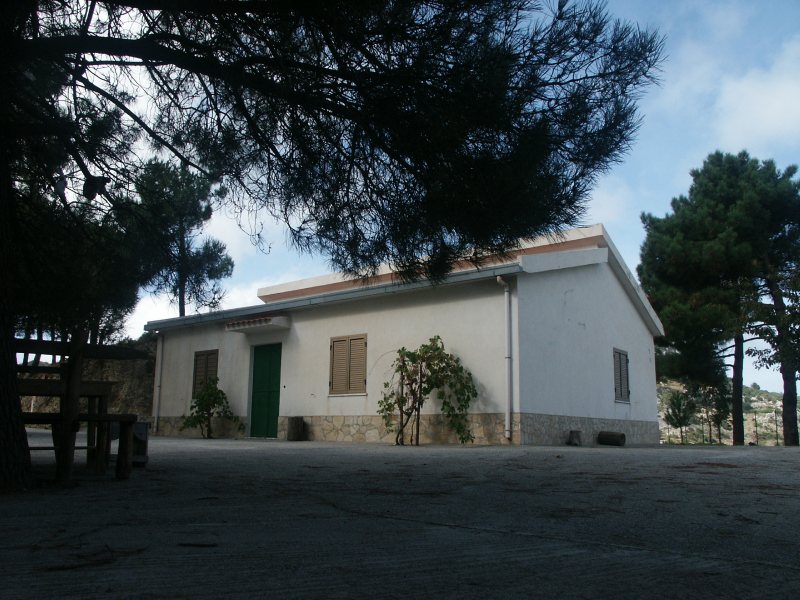Pietrapennata Station
Disponibilita Camere
Camere
Non ci sono camere disponibili
General Info
Description
This Station consists of a one-storey, stone rectangular building whose double-pitched roof is tiled, its outside walls plastered in white and resting on a stone base. The building, consisting of 4 reception rooms is located inside a fenced area providing drinking water and recreational facilities. There is also an outhouse to house the tools used to take care of the station’s orchard and kitchen garden. The surrounding habitat is larch woodland.
How to arrive
Leave the SS 106 at Palizzi Marina and drive up to Palizzi, and enjoy the marvellous view provided by the homonymous river. Having reached the village, you follow the main road, passing through the village and around it in order to continue your journey. The view of Palizzi in all its splendour, seen from different angles, leaves one amazed. Following the signposts, you reach Pietrapennata after about 5 kilometres. On the outskirts of the hamlet, take the road to the left, tarmacked up to the first junction where you turn right onto a road in cement. Continue uphill until you reach the summit where the Station stands. From here you can enjoy a unique view of Staiti.
Altitude
687 metres above sea level
Source
Guida Caselli Forestali della Province of Reggio Calabria
Edited by Alfonso Picone Chiodo
CAI [ITALIAN ALPINE CLUB] Aspromonte Reggio Calabria Section – AFOR Calabria
Check-in
Check-out
Activities
RECINZIONE: SI
CAMINETTO: SI
ACQUA ALL’ESTERNO: SI
Palizzi

The SS 106 highway leads to Palizzi Marina, an ancient port that the late sixteenth-century Calabrian scholar Gerolamo Marafioti said could “easily accommodate seafaring vessels “.
Porto Palizze, as the bay was called in the eighteenth and nineteenth centuries, still has, and not surprisingly so, a promenade that, though small, is the only one that throbs with life in winter. There is no trace left of the port’s berthing harbour, except for the watchtower which in 1595 began to be called Torre Mozza [stumpy tower] because its upper storeys had been flattened. Only a single corner, standing on a rectangular base, remains today. The village is divided by a river into two districts: Murrotto and Stracia, names clearly alluding to the past. From both neighbourhoods two roads lead, respectively, to small hamlets called Palizzi Superiore and Pietrapennata, passing through the finest vineyards to be found in the Grecanica area.
But the beating heart of Palizzi is its historic centre which stands 272 metres higher up than the seaside village.
THE NAME
Some hold that the name of the town derives from the Greek politsion a diminutive of polis (city), others claim that it comes from polìscin, which seems to mean “shaded locality”.
HAMLETS AND TOWNLANDS
Palizzi Marina, Palizzi Superiore, Pietrapennata, Spropoli; Contrada Iermanata, Contrada Gruda, Case Sparse.
HISTORY
Palizzi is all one could ask of the typical fairy-tale village: a castle towering on the top of an imposing outcrop, a mediaeval village at its feet and a humpbacked bridge straddling a stream from way back in the fourteenth century. Documented for the first time in the mid-eleventh century as belonging to the monastery of Sant’Angelo in Valle Tucci, Palizzi, at the end of the twelfth century it was mentioned as part of the property of the Counts of Bova. In 1322, the estate was sold by Bartolomeo Busca to Guglielmo Ruffo di Calabria, Count of Sinopoli, a landowner with vast estates covering huge areas of southern Calabria. At his death, Guglielmo’s grandson, Antonello, had to share the barony with his uncle Folco, thus giving rise to the Ruffo di Palizzi-Brancaleone branch of the family, which continued for four generations, not without some abrupt interruptions due to dynastic strife between the Anjou and Aragon dynasties. In 1479, Palizzi was in the hands of Bernardino de Maldà Cadorna though by 1498 it had returned to the Ruffo, who had work done to the north-eastern part of the castle, where signs of the refurbishments carried out by architects from the Kingdom of Naples, Francesco Giorgio Martini and Bernardo Rossellino, are evident. The marriage between Geronima Ruffo and Alfonso de Ayerbo d’Aragona in 1505, ushered in a series of repeated dynastic changes which saw the barony pass first to the Troiano Spinellis, then back to the Ayerbo d’Argona family and then, in 1580 to that of the Roman Messinas. It was Giacomo Colonna Romano who had the coat of arms added to the castle entrance, probably as part of further restoration to the building. Owned by the Messina Arduinos since 1666, in 1751 the Palizzi estate was sold to the De Blasios who retained it until 1806 and carried out significant renovation of the castle that characterises, to a certain extent, the building’s present aspect. The imposing building overlooks the village which is medieval in atmosphere and full of narrow lanes and endless stairways leading to the main square and Saint Anne’s Church.
EXPLORING THE HISTORIC CENTRE AND THE TOWN ITSELF
Set against a superb natural backdrop, the village seems to cling to the sandstone outcrop at the foot of the imposing castle. Visitors are immediately spellbound by the village’s unique medieval centre: “palazziate and solarate“[buildings and roofing], the result of imaginative architectural solutions. Its cellars, subways, stairways and roofs (in curved tiling) all depict an untouched natural scene.
The itinerary walk begins at the Schiccio Bridge which straddles the Palizzi river and provides a glimpse of an ancient mill.
Arriving at the centre of the village, it is possible to visit the parish church of Sant’Anna, which houses an interesting corpus of statues of saints and madonnas, including a wooden sculpture by an unknown artist, commissioned in 1827 by Palizzi’s last baron, Tiberio De Blasio.
At the back of the apse stands the marble statue of Sant’Anna e la Madonna [Saint Anne and the Madonna] one of the first sculptures in the round ever seen in the Bova diocese and dating from the second half of the sixteenth century. Of the same period, but of a different artistic mould, is the dome above the left aisle, testifying to the persistence of Byzantine architecture, also evident on the outside of the building where tiling was used to lighten the construction. In this parish, in 1574, the Stavriano established the diocese’s first Latin comunia, to which he donated all of Palizzi’s church property. As only Latin clerics could belong to this community, the Greeks were excluded, impoverished, and managed to survive only by devoting themselves to agriculture and sheep herding. They died leaving heirs who did not even dream of continuing the ministry of parents who had been inexorably defeated by the events.
Passing through the laneways, characterised by particular anti-seismic architectural solutions, the visitor reaches the Mediaeval Castle, a national monument recognised by Italy’s Cultural Heritage Ministry.
The town’s recently-built seaside village stretches along the magnificent coast, the nesting place of the famous Tartarughe Marine Caretta Caretta [Loggerhead Sea Turtles]. Palizzi is, in fact, the chief municipality responsible for the Progetto Life Caretta Calabria [The Calabria Loggerhead Life Project] which, since 2013, is a part of the European Commission’s Environmental DG’s Life Programme.
PALIZZI IGT (typical local product)
The Palizzi area is renowned for the abundance of its vineyards which produce an excellent red wine bearing the IGT label, and which can be tasted in the town’s many characteristic cellars (catoi). For this reason Palizzi is known as the “town of wine”.
Well-known and appreciated throughout the Palizzi area, this is a strong red wine, excellent with roasts, elaborate traditional dishes featuring goat’s meat and pork ragout, stews, game and mature well-seasoned cheeses.
Continua a leggere




